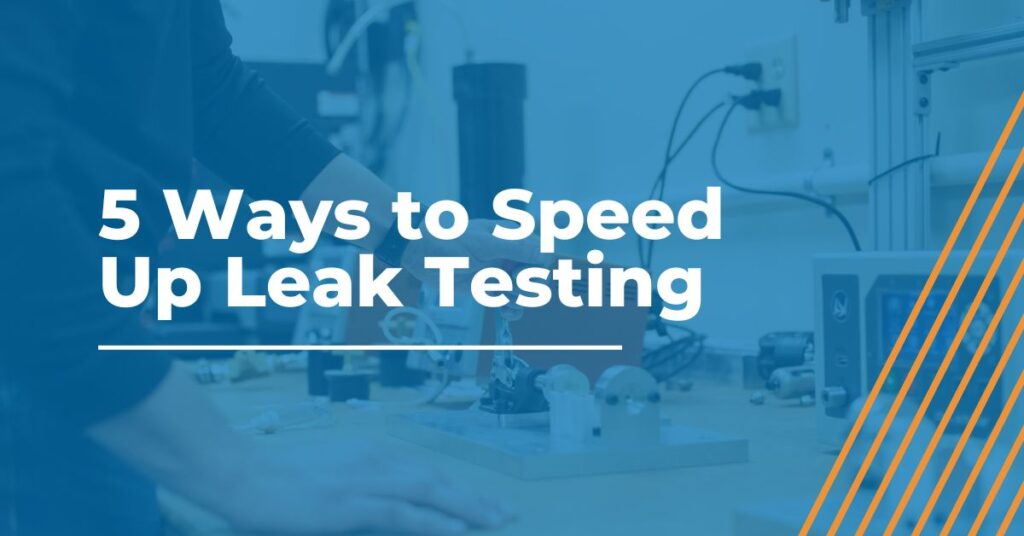
Rev Up Efficiency: 5 Tips to Speed Up Leak Testing
Leak testing is a crucial step in the manufacturing process to ensure consistent quality. It is also one of the more time-consuming processes on an assembly line, particularly for large products. Efficiency is a significant factor in keeping your assembly line productive and consistent, and knowing how to speed up leak testing can benefit your business tremendously.
Object Volume
The volume of the product being tested directly correlates with how long it will take to perform a leak test. Leak testing involves pressurizing or depressurizing the object, so the smaller it is, the faster it can be tested. According to Paul Chamberlain, the CEO and president of LACO Technologies, designing tooling to reduce the product’s volume can save time.
Leak Rate Specification
The leak rate is another determining factor in how long the leak test will take. The smaller the leak rate, the longer the test will take. Switching up the leak testing methods based on the leak rate can prove to be more efficient. Mass flow testing is better for flexible parts, but it can be expensive. Helium and tracer testing is ideal for detecting small leaks and quicker with large parts, but these gases can be expensive as well. Pressure decay testing is the lower-cost option, making it the most accessible. Manufacturers often test for a smaller leak rate than necessary. By understanding the required leak rate for the specific product and application, you can reduce the time it takes for pressure decay testing. Consult with leak test suppliers to ensure they’re testing for the correct rate for the industry, application and product.
The Stabilization Factor
Temperature can increase cycle times, and certain materials are more sensitive to temperature changes, causing them to expand, deform and increase the internal volume. A considerable portion of the cycle time of a leak test is the stabilization step when the object heats up and flexes during pressurization. If not given enough time to settle, the test results can be skewed and show up as a false failure. Restraining the part to limit the flexing makes it possible to test the product without waiting for it to settle.
Testing Device Components
The leak testing device itself can also play a role in the testing cycle time. Accurately detecting leaks is essential, and placing the part being tested as close to the leak tester as possible can help. Restricting flexing can minimize cycle time.
Ask AMS About Ways to Speed Up Leak Testing
Talking with experts and being realistic about the application is smart. At AMS, we can give you a good idea of how long the leak test will take and how the specific components of the part itself can contribute to the cycle time. If you’re ready for reliable leak testing, book a meeting with us.
